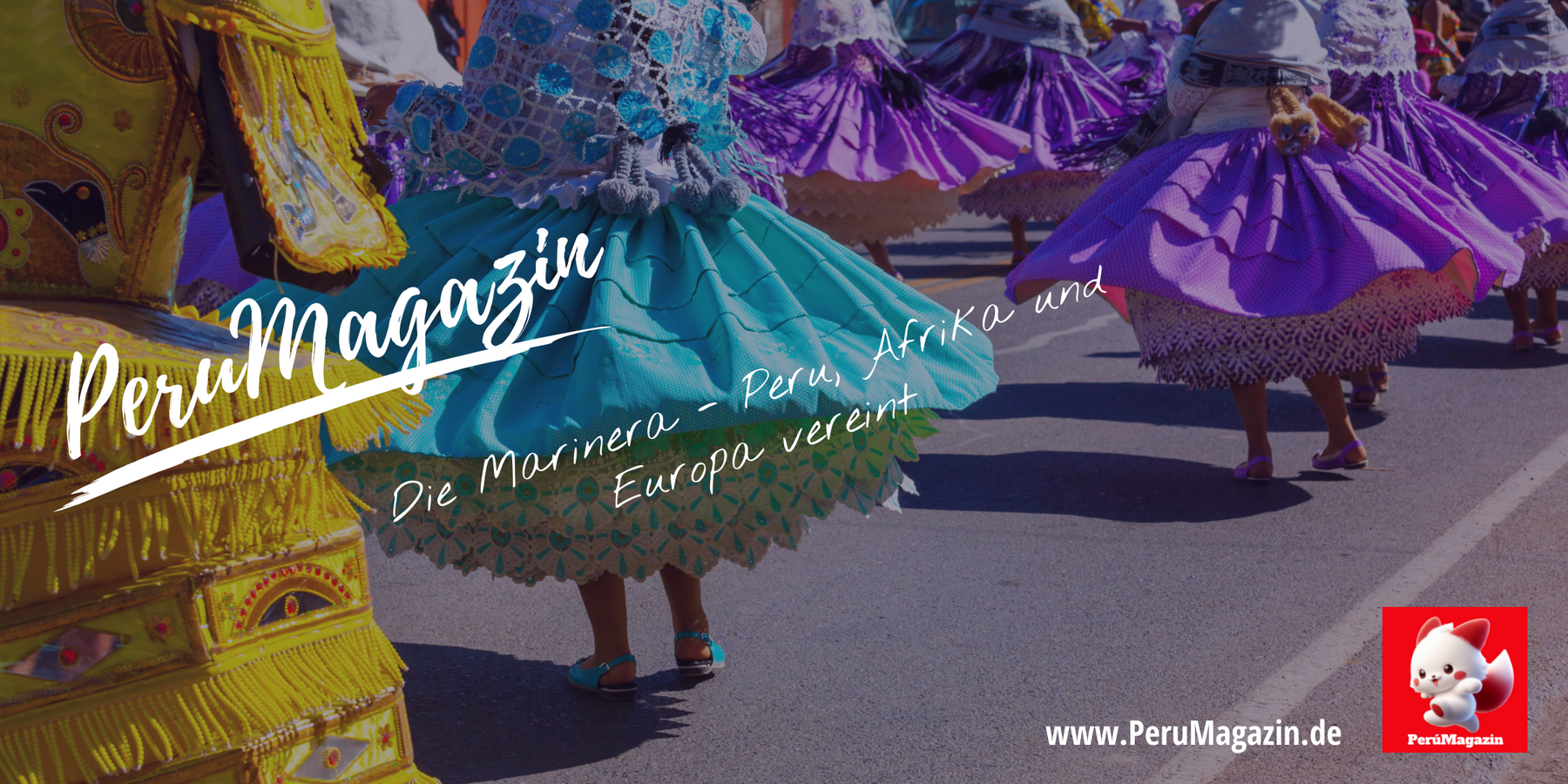
The Marinera - Peru, Africa and Europe united
History and origin of the Marinera
The Marinera is a traditional Peruvian dance that originated in the coastal region of Peru. The origins of the Marinera can be traced back to the 19th century, and the dance developed from a mixture of European, African and indigenous influences. Originally this dance was called "Zamacueca," but at the turn of the 20th century it was renamed "Marinera" to honor the Peruvian Navy.
Styles and regional variations
The Marinera has evolved differently in different regions of Peru, resulting in several stylistic variations. The two most popular styles are:
1. Marinera Limeña: This variation originates from the capital Lima and is known for its elegance and smooth movements. The Marinera Limeña is often accompanied by a guitar and a cajón.
2. Marinera Norteña: This variation from the northern Peruvian region is livelier and more rhythmic than the Limeña version. It is often accompanied by a brass band and is characterized by quick steps and turns.
Characteristics of the dance
The Marinera is a couple dance in which the man and woman dance without physical contact and "court" each other through gestures and movements. Important features of the dance are:
- Costumes: The dancers wear traditional Peruvian clothing. Women often wear full skirts and embroidered blouses, while men wear white shirts, hats and ponchos.
- Handkerchiefs: Both dancers hold a handkerchief in their hand, which they wave during the dance and use as part of the choreography.
- Steps and movements: The dance consists of a series of steps and turns that emphasize elegance and skill.
National and World Marinera Competition
Since 1986, the Marinera dance has been recognized as a cultural heritage of the nation and is celebrated every year in January with a major competition. The **National and World Marinera Competition** takes place in Trujillo, a city in northern Peru known as the "Capital of the Marinera".
Importance of competition
- Cultural Heritage: The competition pays tribute to Peru's cultural diversity and rich heritage, helping to keep tradition alive and promote awareness of Peruvian culture.
- Participants and categories: The competition attracts participants from all over Peru and from different parts of the world. There are different categories in which dancers compete according to age, gender and experience.
- Events and activities: In addition to the dance competition, the event also features parades, concerts, exhibitions and workshops celebrating Peruvian culture and traditions.
The Marinera is much more than just a dance; it is a symbol of Peruvian identity and cultural heritage. Through its elegance, versatility and rhythmic richness, the Marinera expresses the diversity and pride of Peru. The National and World Marinera Competition plays a central role in preserving and promoting this tradition, creating a platform where people from all over the world come together to celebrate the beauty and spirit of Peruvian culture. ✨
The Marinera is a traditional Peruvian dance that originated in the coastal region of Peru. The origins of the Marinera can be traced back to the 19th century, and the dance developed from a mixture of European, African and indigenous influences. Originally this dance was called "Zamacueca," but at the turn of the 20th century it was renamed "Marinera" to honor the Peruvian Navy.
Styles and regional variations
The Marinera has evolved differently in different regions of Peru, resulting in several stylistic variations. The two most popular styles are:
1. Marinera Limeña: This variation originates from the capital Lima and is known for its elegance and smooth movements. The Marinera Limeña is often accompanied by a guitar and a cajón.
2. Marinera Norteña: This variation from the northern Peruvian region is livelier and more rhythmic than the Limeña version. It is often accompanied by a brass band and is characterized by quick steps and turns.
Characteristics of the dance
The Marinera is a couple dance in which the man and woman dance without physical contact and "court" each other through gestures and movements. Important features of the dance are:
- Costumes: The dancers wear traditional Peruvian clothing. Women often wear full skirts and embroidered blouses, while men wear white shirts, hats and ponchos.
- Handkerchiefs: Both dancers hold a handkerchief in their hand, which they wave during the dance and use as part of the choreography.
- Steps and movements: The dance consists of a series of steps and turns that emphasize elegance and skill.
National and World Marinera Competition
Since 1986, the Marinera dance has been recognized as a cultural heritage of the nation and is celebrated every year in January with a major competition. The **National and World Marinera Competition** takes place in Trujillo, a city in northern Peru known as the "Capital of the Marinera".
Importance of competition
- Cultural Heritage: The competition pays tribute to Peru's cultural diversity and rich heritage, helping to keep tradition alive and promote awareness of Peruvian culture.
- Participants and categories: The competition attracts participants from all over Peru and from different parts of the world. There are different categories in which dancers compete according to age, gender and experience.
- Events and activities: In addition to the dance competition, the event also features parades, concerts, exhibitions and workshops celebrating Peruvian culture and traditions.
The Marinera is much more than just a dance; it is a symbol of Peruvian identity and cultural heritage. Through its elegance, versatility and rhythmic richness, the Marinera expresses the diversity and pride of Peru. The National and World Marinera Competition plays a central role in preserving and promoting this tradition, creating a platform where people from all over the world come together to celebrate the beauty and spirit of Peruvian culture. ✨

Leave a comment